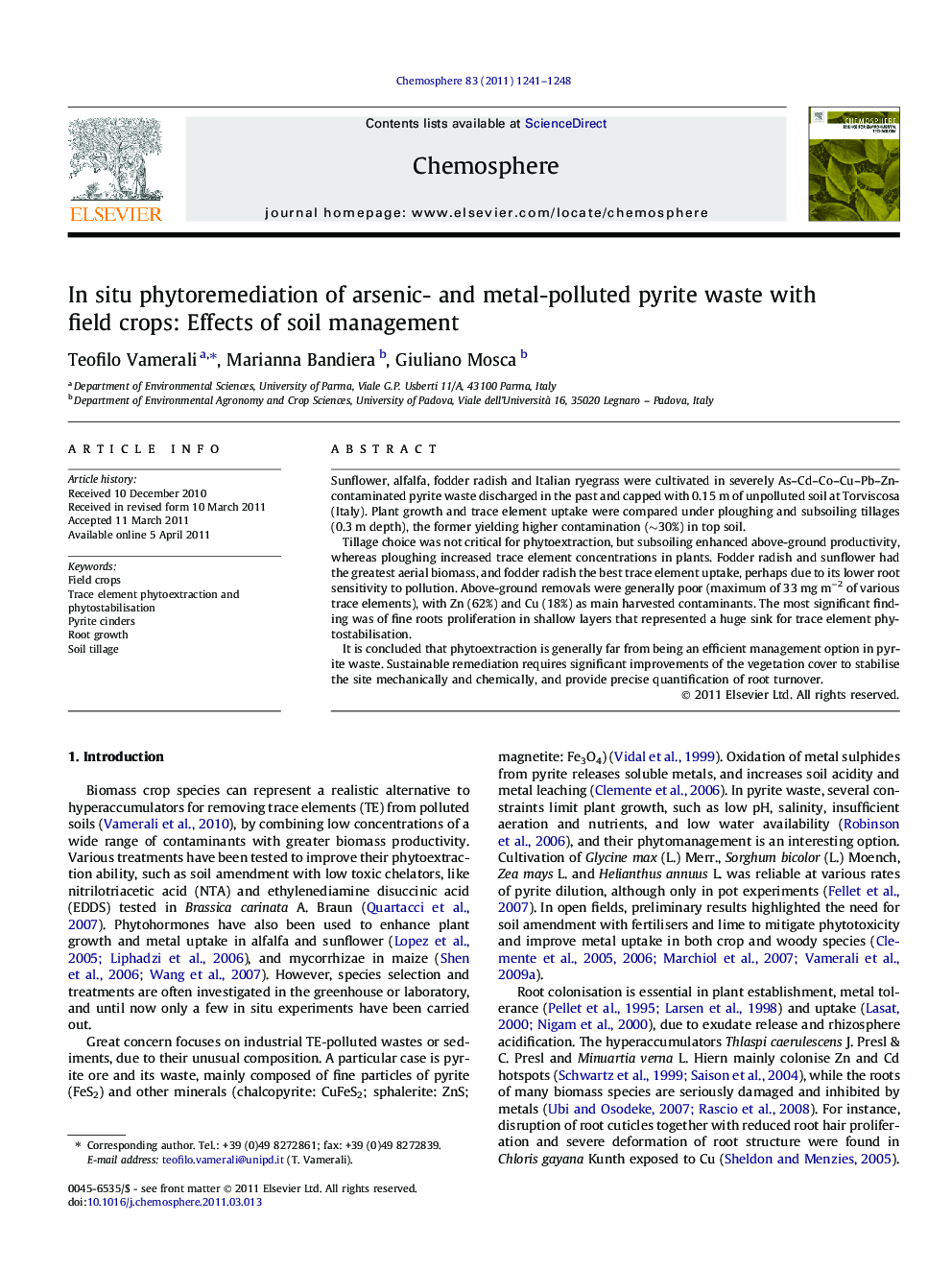| Article ID | Journal | Published Year | Pages | File Type |
|---|---|---|---|---|
| 4411232 | Chemosphere | 2011 | 8 Pages |
Sunflower, alfalfa, fodder radish and Italian ryegrass were cultivated in severely As–Cd–Co–Cu–Pb–Zn-contaminated pyrite waste discharged in the past and capped with 0.15 m of unpolluted soil at Torviscosa (Italy). Plant growth and trace element uptake were compared under ploughing and subsoiling tillages (0.3 m depth), the former yielding higher contamination (∼30%) in top soil.Tillage choice was not critical for phytoextraction, but subsoiling enhanced above-ground productivity, whereas ploughing increased trace element concentrations in plants. Fodder radish and sunflower had the greatest aerial biomass, and fodder radish the best trace element uptake, perhaps due to its lower root sensitivity to pollution. Above-ground removals were generally poor (maximum of 33 mg m−2 of various trace elements), with Zn (62%) and Cu (18%) as main harvested contaminants. The most significant finding was of fine roots proliferation in shallow layers that represented a huge sink for trace element phytostabilisation.It is concluded that phytoextraction is generally far from being an efficient management option in pyrite waste. Sustainable remediation requires significant improvements of the vegetation cover to stabilise the site mechanically and chemically, and provide precise quantification of root turnover.
► In pyrite waste under 0.15 m soil, ploughing and subsoiling are two options. ► Pollution level differed, but tillage choice was not critical for phytoextraction. ► Among a few crops, Zn and Cu phytoextraction was appreciable in fodder radish. ► Trace element root phytostabilisation is more efficient than phytoextraction. ► Low root sensitivity and high productivity are key traits in stabilising the site.
